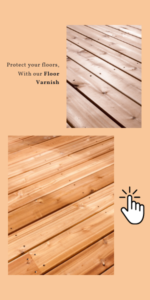Decking stains not only fulfill their purpose perfectly, but also perfectly change the color of the wood, as well as provide a high level of UV protection. Decking oils, formulated to penetrate the wood structure, protect the wood flooring from the inside.
For flooring products, this could mean colored flooring oil or one of the alternative coating products that leave a film of plastic or paint on the surface of the wood.
Generally, if you have a merbau or other hardwood deck, you will want the best decking oil for merbau; if you have a softwood deck or are using recycled wood, you are likely to rip up the stain. If the deck is made of merbau, teak, or yarrah, for example, you will most likely want to use oil to enhance the natural beauty of the wood. For example, if you have a merbau blanket that is dark solid wood, depending on the look you want, it may be better to use a lightly tinted oil to limit further darkening of the wood color.
 Basically, what distinguishes oil from wood stain is that the stain will improve the appearance of the carpet by changing the color of the wood; the oil will improve the current color if you want to leave the wood as is. Because stains and floor oils can sometimes be the same and sometimes very different.
Basically, what distinguishes oil from wood stain is that the stain will improve the appearance of the carpet by changing the color of the wood; the oil will improve the current color if you want to leave the wood as is. Because stains and floor oils can sometimes be the same and sometimes very different.
As a guideline, dark flooring oils provide better UV protection than lighter or lighter flooring oils. Help replenish natural wood oils to keep wood nourishing and supple. apply, clean and maintain. Thanks to their deep penetration into the wood and effective sealing water retention, floor oils provide excellent protection against mold and mildew.
The high concentration of oil and wax makes the deck board very resistant to water and dirt penetration, while providing a durable finish that is easy to maintain. Some flooring oils can cover up to 24 square meters per liter. Resistant to rain and ready to use for light foot traffic in about 4-8 hours depending on the brand of flooring oil and the product used. Many contain UV filters to slow down UV exposure. damage to the wood sheathing. Decking oils are rain resistant and many contain UV filters or blockers that slow down the effects of the sun and water on the wood.
A premium patio oil that protects wood and maintains the natural look and feel of wood. A quality oil to consider for your deck is easy to coat, water repellent, mildew and mildew resistant, and provides UV protection so the wood cannot be damaged by the sun. The most suitable oil for your deck will depend on the use of your deck, the amount of exposure to the elements, the type of oil previously applied and the type of wood from which it is made. It is best to apply the flooring oil piece by piece or plank by plank to provide even oil protection for wood floors.
Let the oiled flooring dry for four hours, then apply a second coat. Using a brush, apply a generous amount of oil directly to the flooring. To apply the oil, run your brush or swab over the bridge in a straight line for as long as possible.
When painting large areas such as decking, cover no more than three panels at a time with long, continuous strokes, applying enough oil to the applicator to saturate the wood.
Apply more product if necessary to keep the wood damp during this time. Using warm soapy water and a stiff deck brush, scrub any dust and grime out of the wood deck, then hose down and let dry. If your deck is heavily exposed to the elements, use deck cleaner to remove all dirt, grime and any green stains; significantly improve the appearance before applying the oil. After waiting for the flooring to wear off, treat the new flooring with oil or stain as usual.
Aging is based on wetting and naturally drying wood several times to leach out tannins and oils, usually taking 4 to 6 weeks, but this depends on weather conditions and the type of wood. The reason for aging is that your blanket is still full of tannins and oils, and exposure to the sun and rain washes them away so that the wood surface is ready for oil penetration and better adhesion of treatments. For the oil to work, the plate must first be cleaned of dust and other debris, otherwise there is a risk that the oil does not stick to the surface and does not come off. Aging of the log is very important as it washes away all the tannins and oils under the influence of sun and rain.
Or, if your deck surface has traces of old finishes, it is best to skip the cleaning process and simply sand the old finishes before applying new finishes to your deck. The final step in rebuilding the deck is to finish it with a new layer of decorative oil or wood stain.
Once you’ve cleaned and prepared your wood deck for lubrication, it’s time to apply the oil. This process only takes about an hour, and once your deck is completely dry, you can reapply the oil correctly. Again, you need to remove the old oil from the flooring before applying a new coat. To apply flooring oil, mix the contents of the can thoroughly, then apply the oil in thin layers using a brush, roller or spray bottle.
To keep your deck protected, the oil will need to be reapplied periodically. Oiled decks should be cleaned and oiled twice a year to protect the wood.

